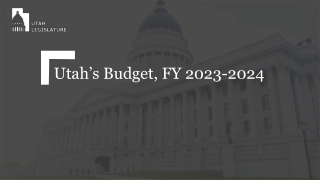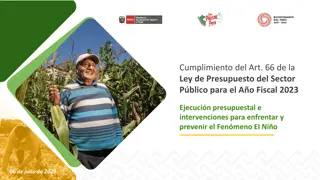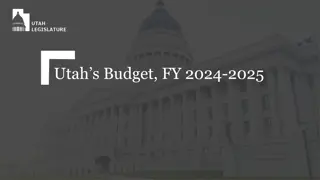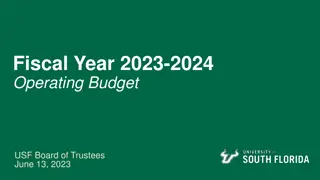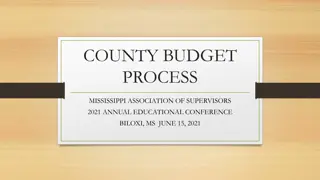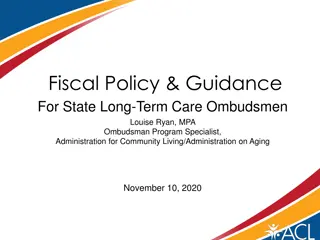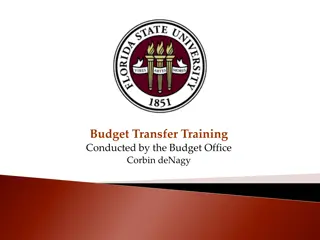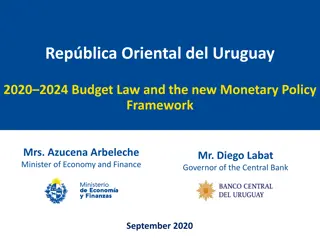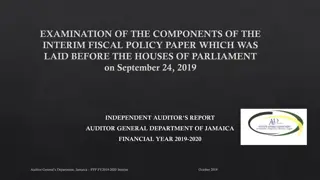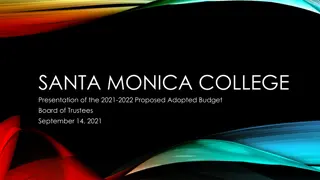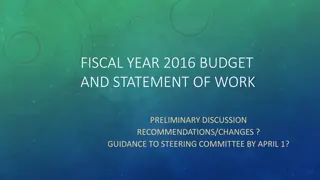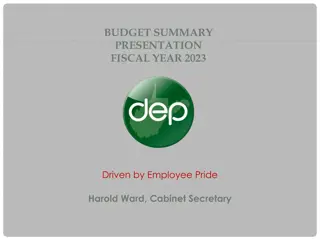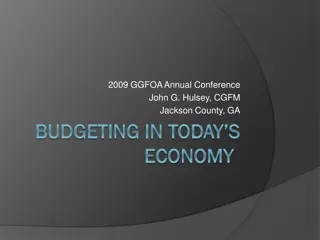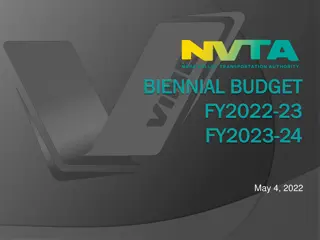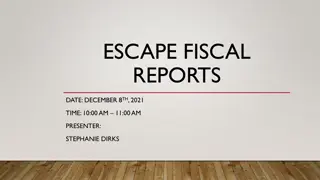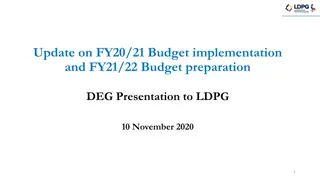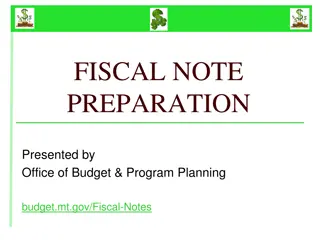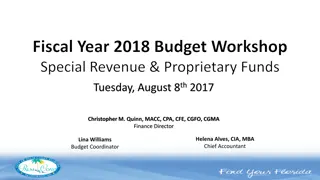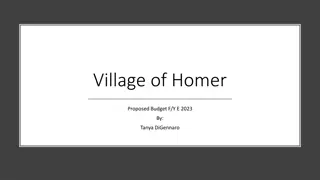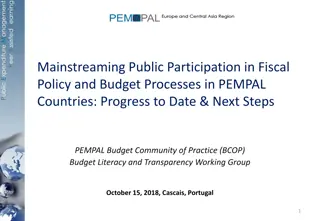Budget 2023 Summary: Political, Economic, and Fiscal Highlights
The Budget 2023 by Craig Renney in May covers a range of critical areas including Political Background, Economic Outlook, Fiscal Outlook, and Spending Highlights. It reflects the challenges faced by the government amidst an impending election and economic uncertainties. The economic forecast is more optimistic with inflation falling and unemployment rates improving. The fiscal position appears stable with low net debt and a return to surplus projected in 2026. Spending highlights include investments in childcare, transportation, insulation, and healthcare. Overall, the Budget aims to balance spending priorities, economic growth, and public welfare.
Download Presentation

Please find below an Image/Link to download the presentation.
The content on the website is provided AS IS for your information and personal use only. It may not be sold, licensed, or shared on other websites without obtaining consent from the author.If you encounter any issues during the download, it is possible that the publisher has removed the file from their server.
You are allowed to download the files provided on this website for personal or commercial use, subject to the condition that they are used lawfully. All files are the property of their respective owners.
The content on the website is provided AS IS for your information and personal use only. It may not be sold, licensed, or shared on other websites without obtaining consent from the author.
E N D
Presentation Transcript
Budget 2023 Craig Renney, May 2023
Budget Briefing PSA Political Background Economic Outlook Fiscal Outlook Spending Highlights What do we think?
Political Background - This is the sixth Budget of Grant Robertson and the fifth Wellbeing Budget - The Budget was written in the looming shadow of an election and a challenging domestic economy - The Government has come under sustained attack for its spending decisions to date, and for the level of spending - Inflation worries everyone - and interest rates continue to cause pain - So: - Spend all the money - But don t cause inflation - Win an election - Make everyone happy - Simple
Economic Outlook - Firstly, the Budget forecasts are produced by the Treasury not Government. - Secondly the forecasts are much more optimistic than was the position six months ago. Recession is avoided. - Inflation falls more quickly and is back in the Reserve Bank target rate by September 2024 - Unemployment rises, and interest rates rise. But both are forecast to be better than some forecasters had expected - Average wages rise faster than inflation in each year - House prices continue to fall. While immigration continues to increase. Normally both of these things don t happen at the same time
Fiscal Outlook - Firstly, we need to get one quick assumption out of people s heads . - Secondly, the fiscal position does not look like one of a country gripped by an economic crisis: - Net Debt is low and remains well below the government s headline of 30% - at around 20% across the forecast period - OBEGAL comes back into surplus in 2026. It s also meaningless - Spending is stable across the forecast period. As is Taxation. Indeed it s a picture of pacific calm - There is nothing here that supports a story of government spending being out of control. Indeed, the Treasury believes that across the forecast period, the government is reducing demand not increasing it
Spending Highlights - 79% of all spending is just to keep the lights on. Usually its around 50%. - $4bn in savings and reprioritisation was found to help with the Budget - But there were still some goodies: Childcare investments to extend 20 hours ECE funding to 2-year-olds. Transport providing free public transport for under 13s, and permanent half- price fares for those under 25. Insulation expanding the Warmer Kiwi Homes Programme to another 100,000 new heating and insulation installations. Co-payments for drugs ending the $5 co-payment for prescriptions, helping around 3 million New Zealanders per year.
Spending Highlights -Healthy School Lunches Programme continuing the programme to feed children in schools until the end of 2024. -Apprenticeship Boost providing more funding for the scheme, which will enable 30,000 apprentices to keep working toward a qualification. -Science 3 new research hubs to tackle issues such as climate change and pandemic readiness, and support for an additional 260 PhD students. -House building delivering 3,000 more public homes by June 2025 - Closing tax loopholes for multinationals and Trust funds brings in $1.2bn There were also a number of other non-fiscal measures. -Kiwisaver contributions for those on Paid Parental Leave
What do we think? This is the kind of investment that makes sense. It improves the quality of life for some of the poorest and most marginalised New Zealanders. It makes the cost of living cheaper by reducing essential costs. It improves the outcomes that the Government cares about. These smart investments pay dividends not just now, but year after year after year. A picture is emerging there s the start of a plan here that could make a difference. But we are still hiding behind fiscal indicators instead of delivering the kinds of transformational change that would create the country we want. New Zealand should be moving the structural levels of taxation and spending to those we see in the countries that we compare ourselves to. The full plan to deliver the more productive, sustainable, and inclusive economy we want is still just out of reach.
What do we think? We hope the election campaign will begin to set out this choice . But this Budget is a good start. The battle lines are becoming clearer. We can choose to make more investments as seen here to protect the most vulnerable and to catch-up on decades of underinvestment. Or we can return to a country where people were left to fend for themselves, and where a person s ability to pay dictated their access to once public services. Our economic growth has made New Zealand the best place in the world to be in business. Now, we want to be the best country in the world to be a worker, and to be a child.
https://union.org.nz/what-budget-2023-means-for-working- people/


